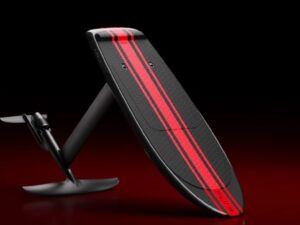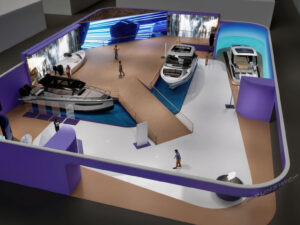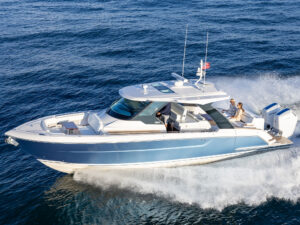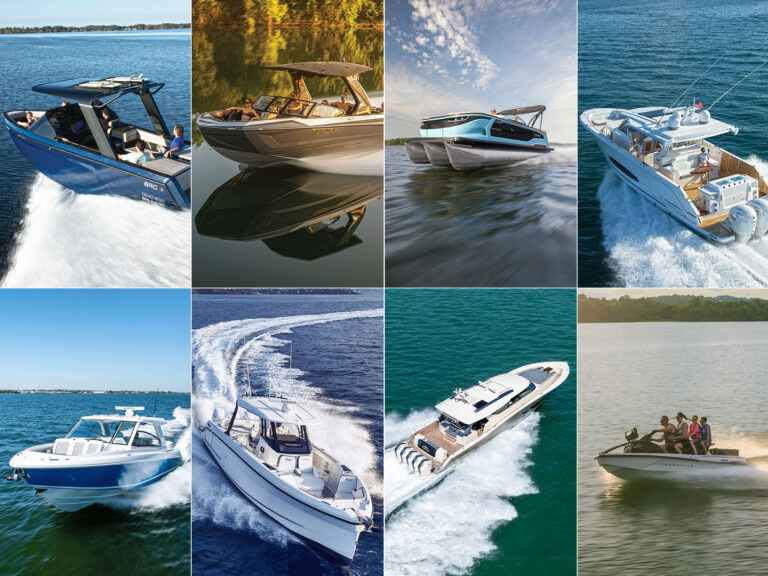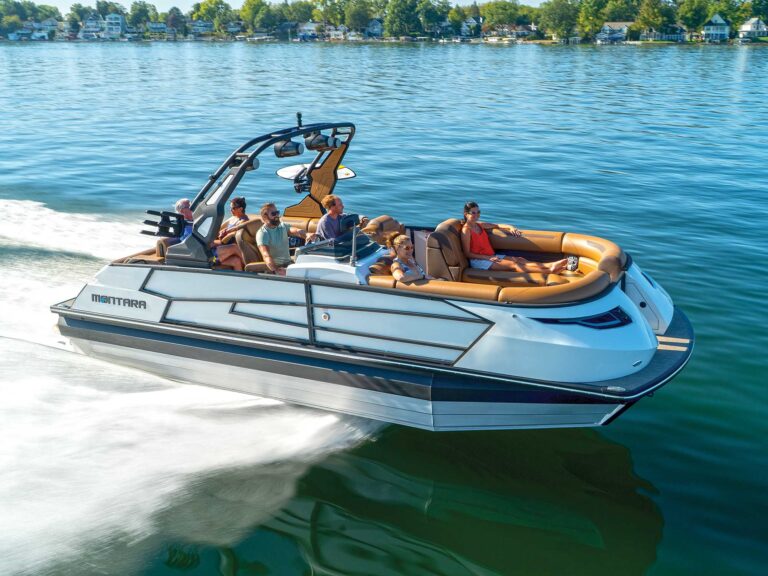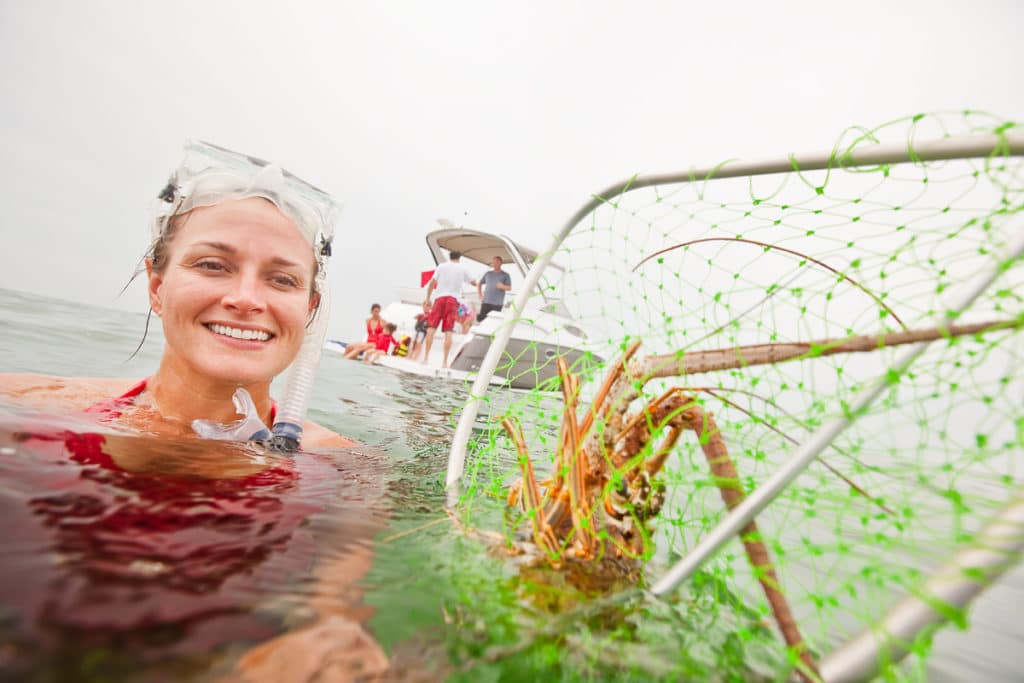
At first light, we make our way about a mile off the Florida Keys where the crystal-clear water is roughly 10 feet deep. On the way, the captain (my husband, Doug, a veteran angler) tutors me on how to catch spiny lobster, also called “bugs” because (besides the fact that they are arthropods) when they walk on the seafloor and boat decks, they resemble Jurassic-size cockroaches. I don my snorkel gear and heavy gloves, grab a mesh bag, 2-foot “tickle” stick (used to coax lobsters out) and plastic measuring device, and then jump overboard into the bathtub-warm water, determined to bag my very first lobster. Hanging on to a deck rope, I drag 15 feet behind the stern as we idle along, keeping my eyes peeled for my prey.
Lobsters are supreme hiders, and I’m instructed to keep a keen eye out for the telltale sign of their long antennae, which peek out from hiding spots. Once I have one in my crosshairs, I’m to let go of the rope, dive underwater, lure the lobster out of its hole with the tickle stick and pop it in my net. Easy peasy, I think, especially since Florida lobsters lack the front claws of their northern cousins. While in tow, I see some friendly sea critters — colorful fish and a small stingray — and I’m admittedly momentarily unnerved when I drag over a 6-foot nurse shark lurking below — but no lobsters at first.
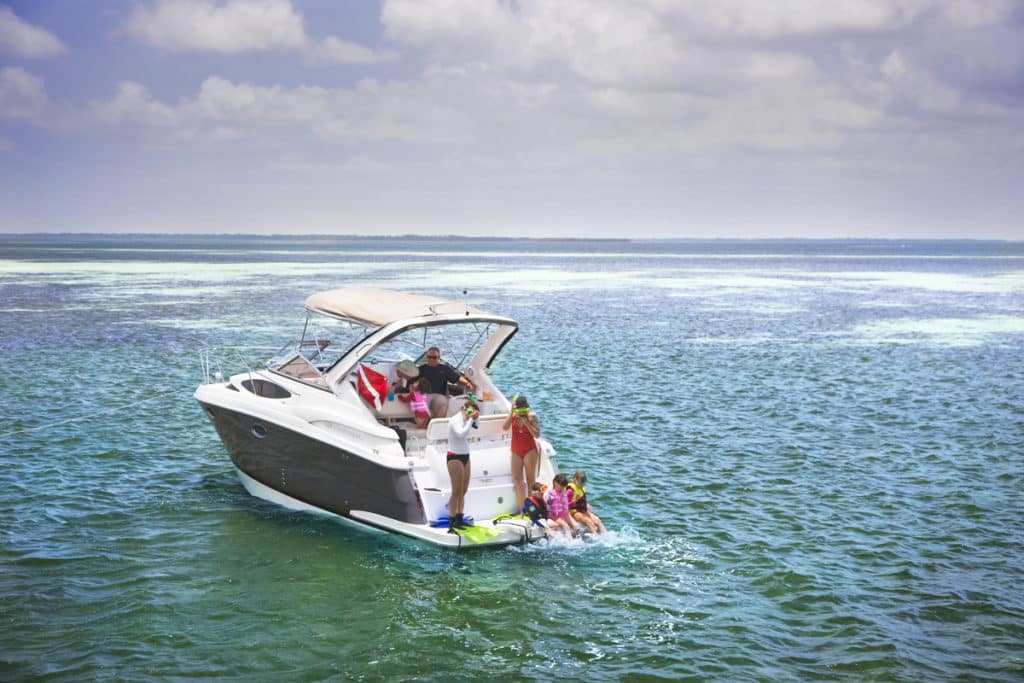
After 20 minutes, my arm is aching from holding against the drag, and I consider switching jobs with my drag buddy (who is there to give Doug a heads-up if I drop off so he can cut the engine). But then I spy 12 feet of old sewer-pipe rubble bristling with antennae popping out of every rusted hole. Excited, I let go of the drag and shout to them to drop anchor and raise our dive flag. With a colony of the critters below, we’re going to be here for a while.
Although long considered one of the most edible riches of the sea, lobsters aren’t the only shellfish that are fun to catch and tasty to eat. Folks with access to a boat and a coast can harvest a bevy of delicious sea life, such as scallops, shrimp, oysters and stone crabs, pretty much anywhere like I do in Florida. Take a look at these other delicious creatures you can harvest by boat.
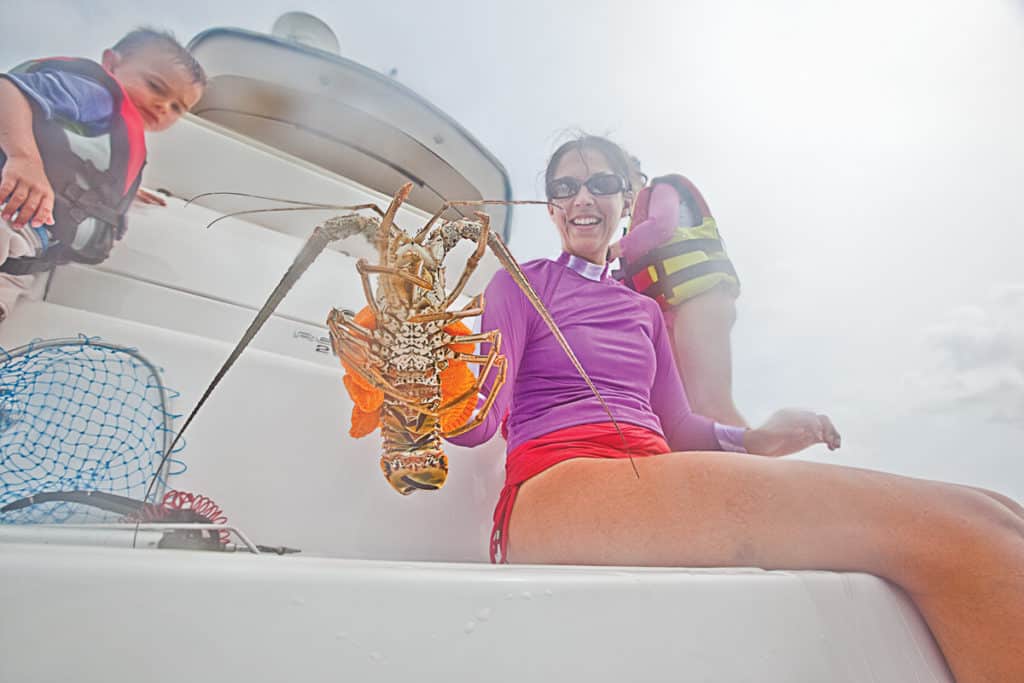
Loving the Lobster
I take a deep breath and swim down, making an unfortunate rookie mistake of spooking my first lobster, which uses its tail to jet-propel out of reach. No worries, a little practice with my net behind the lobster and my technique improves. Within a half-hour, we’ve harvested the maximum of six lobsters per diver, tucked safely in our livewell.
I learn that cleaning a lobster is fairly simple: hold it by the torso and twist off the tail. Before chucking the thorax and head, Doug has me snap off one of the spiny antennae and demonstrates how to insert it into the bug’s bottom to easily remove the membrane and waste track and, voila, it’s ready to prepare for dinner.
To safely hunt lobsters, a minimum of three crew members is needed: one to run the boat, another to serve as the drag buddy and a third to spot the bugs. Cruising slowly in 8 to 20 feet of water, preferably at slack tide, the spotter dons a mask, snorkel and some Kevlar gloves, grips a boat line, and slowly drags a safe distance behind, keeping a sharp eye out for the elusive yet edible target.

Lobsters are social creatures and prefer to live cramped together on natural shelves and holes, called “condos” by local divers, within coral and stony reefs. They also gravitate toward boat wrecks, sewer pipes and sunken cinder blocks. They’re excellent hiders, but their antennae, too long to fit inside the condo, often give them away.
Once you see one, dive underwater with a tickle stick, and lure the lobster out of hiding and into a hand net. Remember, a defensive lobster can quickly escape using its strong tail to kick backward.
First, inspect your lobster. Look closely at the underbelly. If you see a bright orange egg sac beneath the tail, congratulations. You’re holding the mother-to-be of some bouncing baby bugs. Unfortunately, she’s off limits for you.
The law requires a lobster to have a minimum 3-inch-long carapace (the part of the shell covering its torso), which means it’s old enough to have reproduced for at least one season. If it measures up, chances are that bug may be getting toasty on your grill tonight. Keep lobsters in a livewell or on ice until you’re ready to prepare them. (Make sure they do not sit in meltwater, which will kill them. Some experienced boaters use blue ice packs instead of ice, or place them in a cooler covered by a rag soaked in sea water.) Again, fresh water causes lobsters to drown.
There are two lobster seasons in Florida: a mini season that runs on the final consecutive Wednesday and Thursday of each July and then an eight-month season from August 6 through March 31 the following year.

Searching for Scallops
Scalloping, often referred to as the “great underwater Easter egg hunt,” is an aquatic adventure suitable for all ages. All you need is standard snorkeling gear, a required dive flag, and a mesh bag in which to store your stash.
Scallops are most prevalent where natural springs meet open bays. While they can migrate to water as shallow as 2 feet where you can wade to gather them, to score the real mother lode, take your boat to deeper water, typically 4 to 8 feet, where these bivalves nestle in and pepper the tops of turtle and sea grasses.
They’re easy for novice and veteran scallop hunters alike to spot. With unmistakable fan-shaped shells and hundreds of fluorescent beady blue eyes, beguiling temptresses beckon to be caught. Simply snorkel around, and when you spot one, dive down, scoop it up with your hands, and then toss it in your bag.
Between snorkeling sessions, scallops should immediately be put on ice. After chilling in the cooler, the shells will open a bit, making them easy to pry apart with a butter knife or spoon, and scoop out the succulent white meat. You can shuck them yourself, but most public docks have eager locals willing to clean them for a small fee.
Scalloping season in Florida runs annually from June 25 to September 24. Each person is limited to 2 gallons of scallops in the shell or 10 gallons per vessel per day.
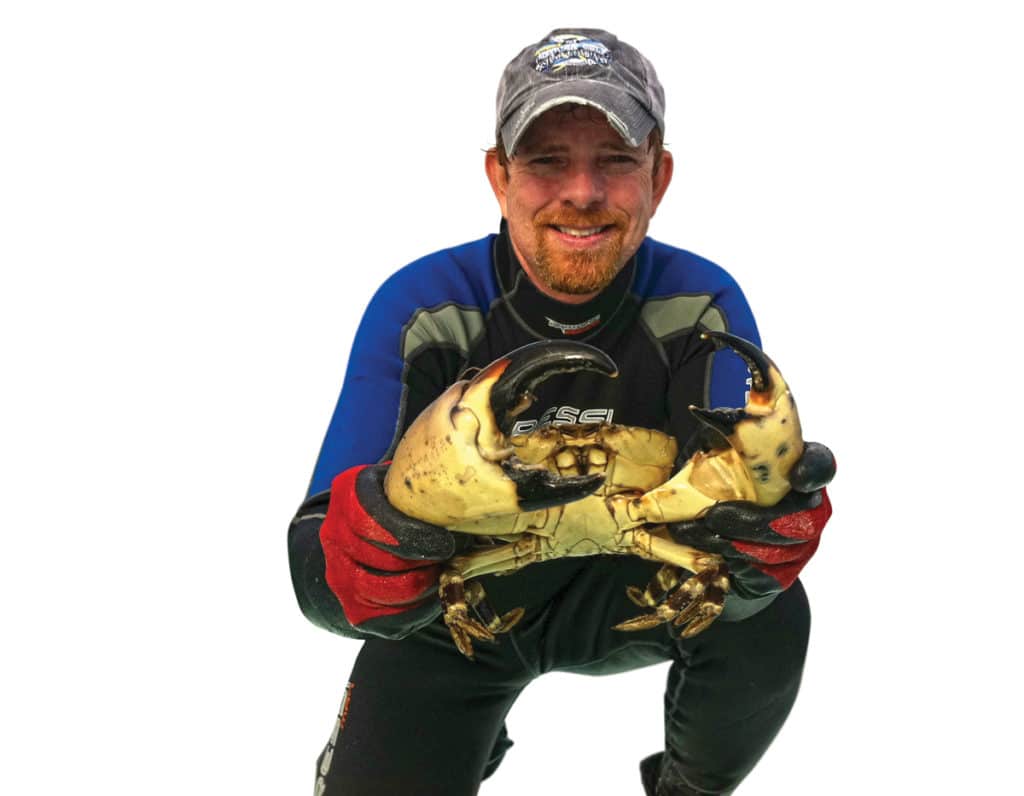
Clawing for Crabs
In Florida, once scalloping season closes, the long-anticipated stone crab season rides in on its coattails. Considered by many to be one of the most heavenly delicacies of the sea, stone crabs are named for their natural environment — they usually seek shelter under big, flat stones in shallow rock piles and jetties.
There are essentially two ways to catch stone crabs: staying dry and dropping traps from the deck or jumping in and hunting them down. The latter method is only recommended for rugged and adventurous outdoorsmen seeking some hand-to-claw combat. It isn’t an activity for small children, and ER waiting rooms brim with amateur crab anglers nursing broken fingers.
Wear heavy gloves and dive using scuba or snorkeling gear; lift up large stones or use a hook to drag the crab out; then square off in a battle with your prey. Stone crabs generally aren’t swift, so try to nab one by the elbows coming in from around each side. If the claws are 2¾ inches or more, and the crab isn’t bearing eggs (like with the lobster), simply twist the “wrists,” and the claws will easily break off. The crab will then go into a state of hibernation while its claws regenerate.

Most bait-and-tackle stores carry stone crab traps, each usually less pricey than a pound of the jumbo claws sold at local restaurants and seafood stores. Each person can launch five pre-baited traps (there are detailed rules about precisely where it’s allowed), then mark the buoys and record the GPS. Traps should be checked every couple of days.
Unlike scallops, stone crab claws should not be put on ice because the meat will later stick to the shell. Instead, store them in a livewell or an empty cooler. Each person is allowed 1 gallon of claws per day, or a maximum of 2 gallons per vessel. Stone crab claws are generally boiled or steamed, then served hot or chilled. The season runs annually from October 15 to May 15.
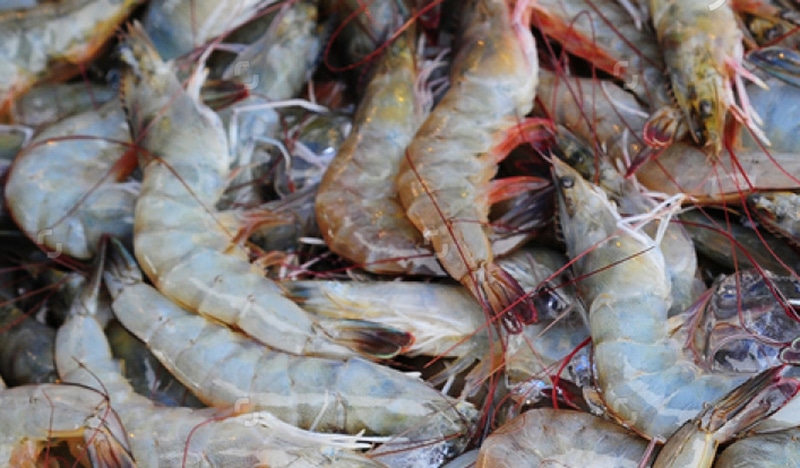
The Shrimp Dip
It’s almost criminal how effortless it is to catch shrimp, making it a fun activity for all ages. The only equipment you’ll need are a submersible light (preferably green rather than white), a sizable dip net and a bucket to store them.
Although even professional shrimpers can’t accurately predict when shrimp will be most plentiful, full moons, outgoing tides, colder months, shallow, grassy flats, and areas near bridges with strong currents enhance your chances for this crustacean crusade. The quintessential trick for catching loads of shrimp is to stake out these little guys at night.
Like much marine life, shrimp are primarily dormant during the day and rely on moving about in the darkness of night as protection from their natural predators. In the evening, large schools of juvenile shrimp embark on fervent nocturnal runs. In an aquatic coming-of-age story, they abandon the safety of their muddy, sandy homes in an attempt to join their larger, adult counterparts farther out to sea.
Place the submersible light in the water or strap on a headlamp and you won’t miss the kaleidoscope of glowing eyes. Simply interrupt their run by scooping them with a dip net. There’s no size limit for shrimp, and the season is mostly yearlong with a few exceptions for a handful of Florida counties. Each person is permitted to catch 5 gallons of shrimp, heads on, per harvester per day, but here’s the rub: Regardless of the number of folks on board, the limit is still 5 gallons per vessel per day.

On to the Oysters
Oysters are largely stationary mollusks, which makes harvesting them fairly simple from aboard your boat or wading in the water. Shucking them, however, requires skill and finesse using a sharp, short-bladed knife, so if you harvest your own, take caution you don’t get hurt.
A single oyster can spawn 100 million eggs each year that, once fertilized underwater with sperm, form free-floating larvae, which anchor themselves to hard surfaces, frequently on the shells of other oysters, and become known as “spats,” or baby oysters. Spats build up on shallow shoals and grow larger and larger until they become an oyster bar.

Always go harvesting at low tide and make sure you’re only harvesting submerged oysters. Colonies are often found on the sea bottom, bridges and rocky areas, and along mangrove shorelines. Using wires, some folks even attach discarded oyster shells to their crab traps as an attractive landing spot for spats.
Oyster shells have sharp edges, so be sure to wear heavy gloves. Using a metal, curved rake or oyster tongs, chip the oysters off the hard surface and put them in your bucket. Mature oysters take 18 to 30 months to reach the legal 3-inch harvesting size. In Florida, there’s a maximum of two 60-pound (about 5-gallon) buckets per person or per vessel. Depending on which county, the season is closed from June to September.


